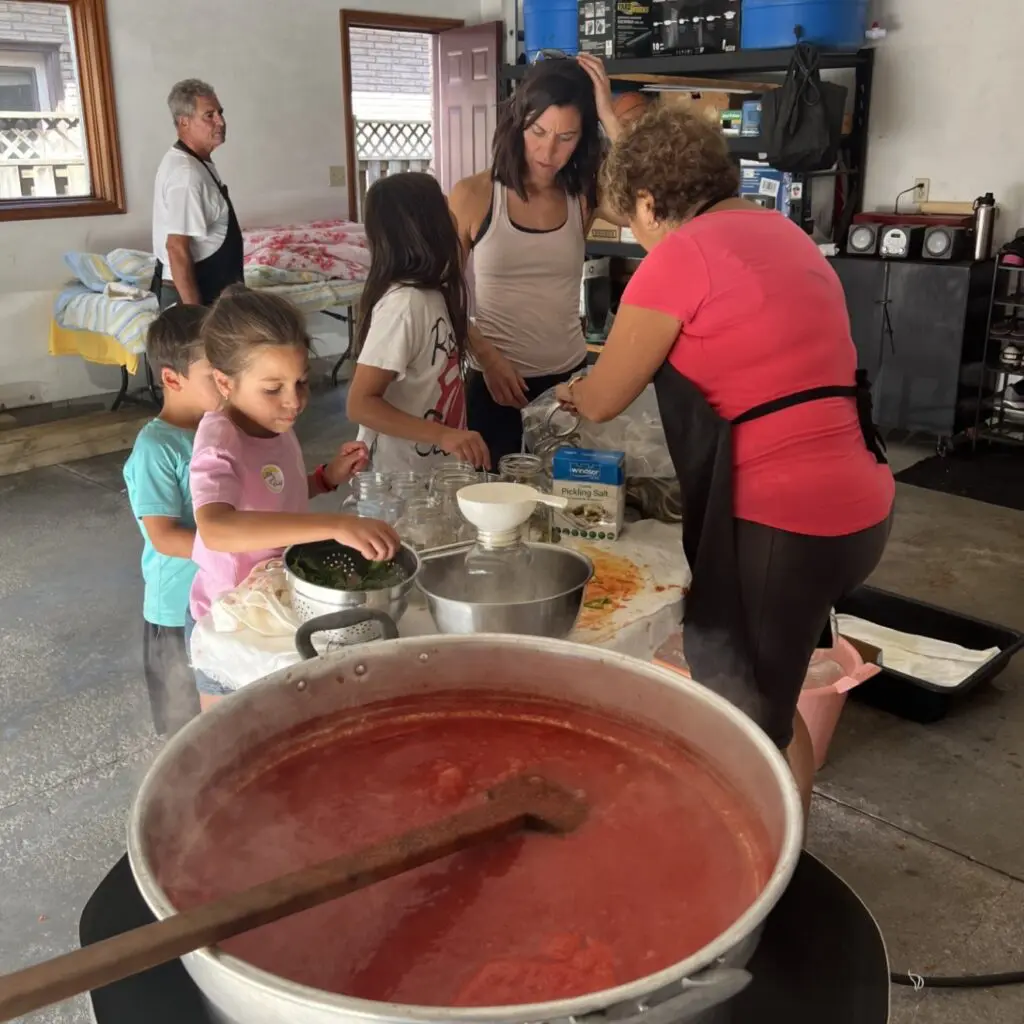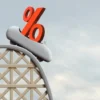
Yep, it’s that time of year again.
The time of year when many good, old fashioned Italian families get together in Nonno and Nonna’s garage (usually on the hottest day of Summer) and crank out enough jars of homemade tomato sauce to last a whole year.
My family is no exception…
Even the kids are starting to get into it! 😊
These pictures really do not even do justice to the production facility that we have going.
Our tomato sauce operation consists of my parents, myself and my wife, my brother and sister and their spouses, and all the kids/grandkids.
I’ll be honest, growing up I hated this tradition.
Truthfully, I still don’t love it.
But I love the end-product, and even more so, I love carrying on the tradition!

Speaking of traditions, did you know that once per year many of the most important Central Bankers from around the world get together in a place called Jackson Hole, Wyoming?
This year’s event just took place just last week. Probably around the same time my I was making tomatoes. 😊
Why is this important?
Because the next Bank of Canada interest rate policy meeting, is less than a week away…
Spoiler Alert: They are going to announce another rate cut.
And if I was a betting man, I would bet that this is likely the same announcement that will take place at every other BOC meeting this year, and even through the first half of next year.
Why am I so confident about this?
The Jackson Hole gathering is a weeklong event where at the end of it, the US Federal Reserve Chair, Jerome Powell, gives a speech.
This year’s speech was very “Dovish.”
Dovish, and its counterpart, “hawkish,” is Banker talk for the tone of language used to describe a situation and the associated implications for actions.
More specifically, Hawks favour “tighter” monetary conditions to prevent runaway inflation, while doves favour “easy money” policies to boost economic growth.
This year’s speech is being called very dovish. Which means, they are likely no longer concerned about inflation.
I’m paraphrasing here, but according to their economists, analysts and the abundance of data they have at their disposal… runaway inflation is a thing of the past, and as a result of their actions over the last two years (i.e. raising rates), the inflation beast has been tamed and is no longer their primary concern.
What this means is that all of the central banks around the world need to reverse course and do the opposite of what they did to tame inflation. To tame inflation, they raised rates, fast!
Now they need to cut rates, fast.
Side note: this doesn’t mean that when you go to the grocery store next month, your bill is going to be any cheaper… it just means that your grocery bill won’t be increasing as much from month to month.
So, with this in mind… let’s discuss mortgage rates.
A month or so ago I wrote about variable rate mortgages, and how you should stay away for the time being…
My opinion today, based on the assumption that we are more than likely entering a consistent rate cutting environment, is starting to change… and today, I believe that it might be worth considering a variable rate.
In a falling rate environment, you need to at least entertain the variable option.
Here’s why… today, the average variable rate for a conventional mortgage is 5.70%.
If rates get cut at the September 4th meeting (which they will!), then this rate will go down.
It will likely go down by 25bps. And then it should go down again at the October meeting, the November meeting, and by the New Year, that 5.70% variable rate should be at 4.95%.
A 3-year fixed rate today is somewhere between 4.69% and 4.89%.
So, if you take a 3-year term today, you’re locked into that rate for 3 years. And the penalty to break that term, is not cheap.
The penalty to break a fixed term mortgage can be as much as 1.5% of the mortgage in a falling interest rate environment.
So, if you take a 3-year… your likely stuck in it for some time.
If my prediction is correct, and the Bank of Canada continues to cut rates by 25bps into the Summer of 2025, then by July 2025, your variable rate is now 3.95%.
If the variable rate is at 3.95%, then the conversion to a 5-year fixed rate, is somewhere in the 3.99% – 4.19% range.
Another side note: For the last year or so, almost nobody locked into a 5-year rate. And that’s because the expectation was that rates will come down. Now that they are coming down, by July next year, nobody will be taking about a 2- or 3-year rate anymore. They will be back deciding between a 5-year rate or a variable rate.
So, in summary, I’m not making any recommendations, but I am back tracking on my comments from a month ago, when I said don’t even consider a variable rate mortgage right now.
It’s time to consider variable as an option.
Again, not saying to go variable, but keep an open mind to it, and recognize that it is a reasonable option, depending on your situation.
That’s all for today. If you’re interested in talking more about interest rates, or if you need a jar of tomato sauce, don’t hesitate to reach out. 😊
Until next time,
Vince








